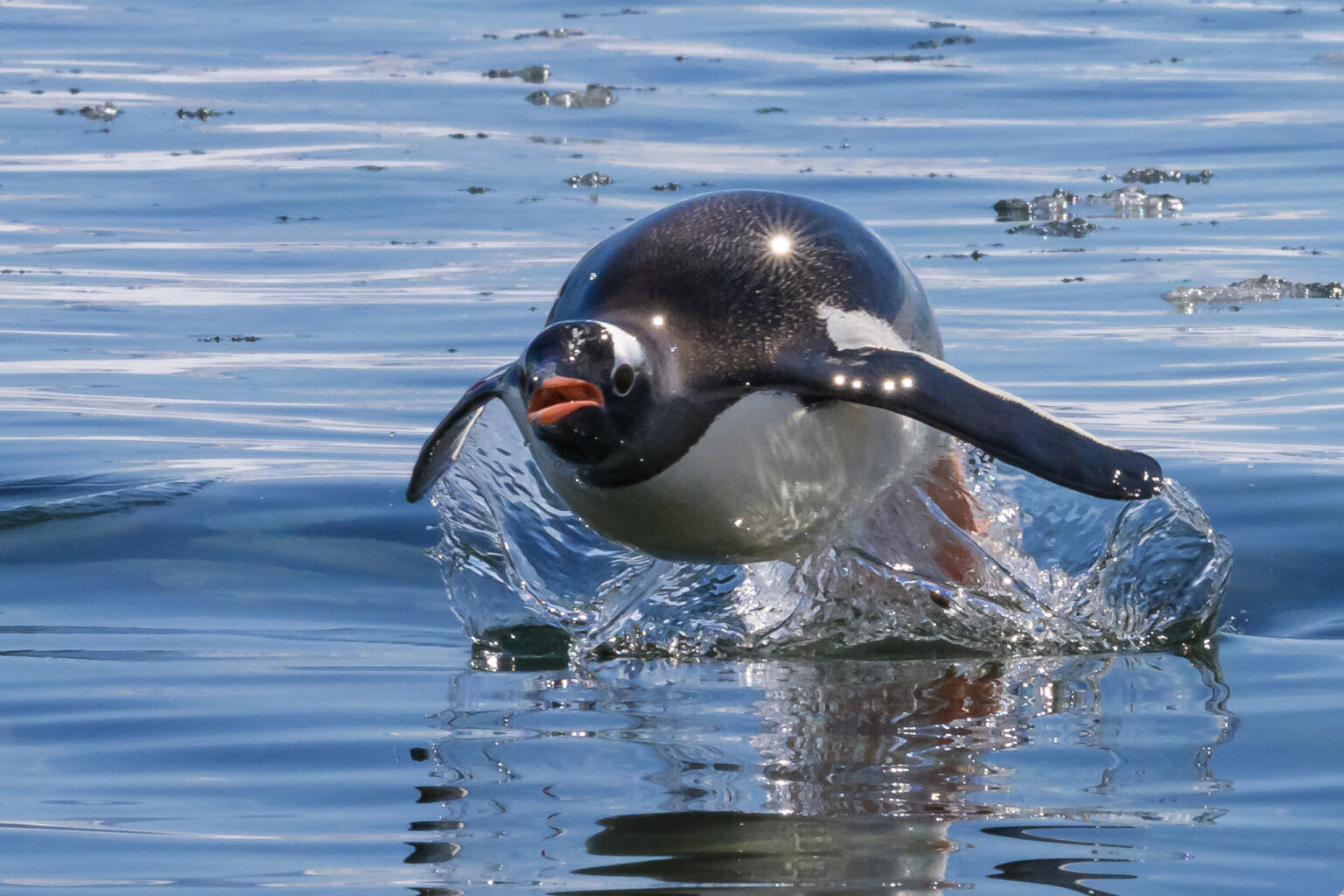
The best shutter speeds for wildlife photography
Shutter speed is the most essential camera setting for sharp wildlife photos. Wildlife is often on the move, and you need a fast shutter speed to freeze their motion. Your shutter speed must also be fast enough to account for the camera’s movement.
The correct shutter speed for wildlife photography is highly variable, depending on the animal species, the speed of the action, and the available light.
If you are looking for quick recommendations, jump to the wildlife shutter speed cheat sheet at the end of this article.
Exposure settings
Photography has three exposure settings: shutter speed, aperture, and ISO. Fast shutter speeds and smaller apertures mean less light reaches your camera sensor, and ISO sensitivity must increase for proper exposure. A higher ISO setting leads to more digital noise in your photograph.
Wildlife photographers want to minimize digital noise in their photos, but you should always prioritize faster shutter speed over ISO. In post-processing, there are many techniques to remove or reduce digital noise, but if your shutter speed is too slow, there is no way to remove motion blur in your photograph.
Aperture is also essential, as it determines the depth of field in focus. Depending on the wildlife scene you encounter, evaluate the proper depth of field and aperture setting. Smaller apertures achieve greater depth of field but allow less light to the sensor, raising ISO and introducing digital noise.
Your goal as a wildlife photographer is to balance these three exposure settings. Use a shutter speed fast enough to freeze the motion, an aperture small enough for your required depth of field, and an ISO high enough to get a well-exposed photo. Don’t be afraid to use higher ISO settings to achieve a shutter speed that is fast enough to freeze the action.
Prevent blur from camera motion
In wildlife photography, there are two forms of motion: the animal’s movement and the camera’s movement. As you track the action with your camera, the camera movement can introduce motion blur in your photos unrelated to the animal’s movement. You can sometimes prevent camera motion using a tripod or camera support, especially in controlled environments like a wildlife blind. However, hand-held photography offers the most flexibility. With unpredictable animal movement, tripods can be impractical and overly restrictive, adding considerable weight to your pack. We recommend hand-held wildlife photography where possible.
The minimum shutter speed needed to prevent motion blur caused by the photographer depends on the photographer’s steadiness and technique, the focal length of the lens, the resolution of your camera sensor, and the image stabilization capabilities of the lens and camera.
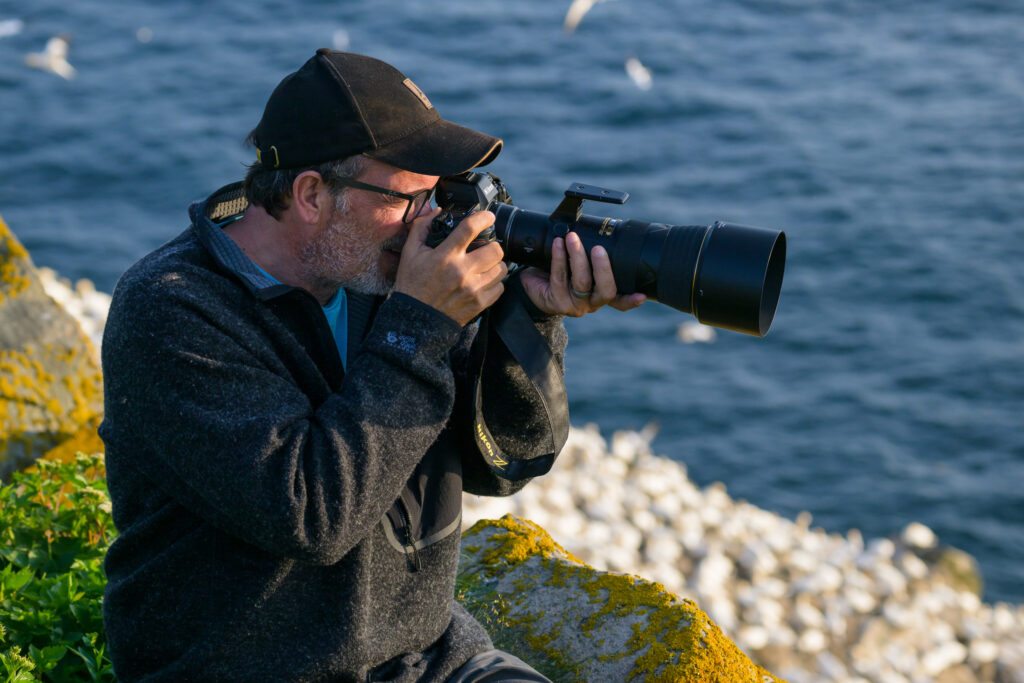
You may hear a rule of thumb recommending using the inverse of your focal length as your shutter speed to prevent motion blur caused by the camera’s movement. For example, with a 500mm lens, use a shutter speed of 1/500 second or faster. However, that recommendation is often too conservative with today’s camera technologies.
Image stabilization built into the lens and camera bodies removes blur caused by camera shake at much slower speeds. For example, you may be able to handhold a 500mm lens at shutter speeds as slow as 1/60 second with acceptable results. When tracking animal motion with your camera, ensure that image stabilization for your lens and camera body is turned on.
Spending more money on fancier camera bodies and lenses can produce better results. More expensive and newer lenses and camera bodies have better image stabilization capabilities than less costly or older gear. Experiment with your camera and lenses using a stationary subject to find the slowest shutter speed you need for sharp images.
Freeze animal motion
Each type of animal movement requires a different shutter speed: resting or stationary animals, walking animals, running/hunting/fighting animals, large flying birds, and small, fast birds.
Animal movement is unpredictable. Sudden motion quickly changes the required shutter speed and is one of the challenges of wildlife photography. For example, an eagle perched on a branch is sharp at 1/640 second. Seconds later, when it takes flight, 1/640 second is not fast enough to prevent motion blur in its wings.
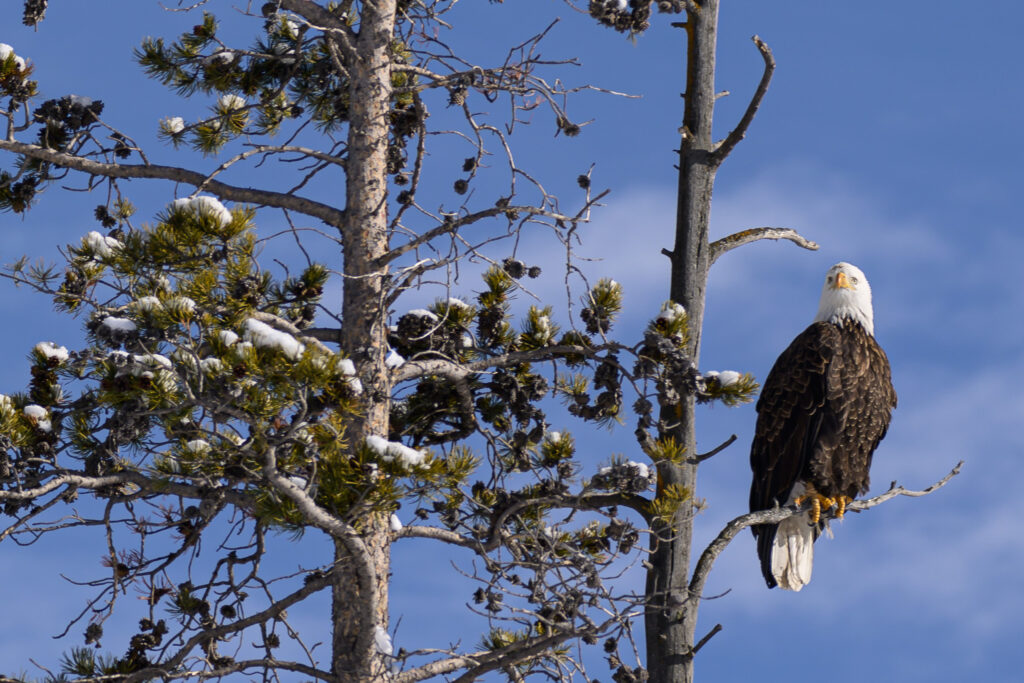
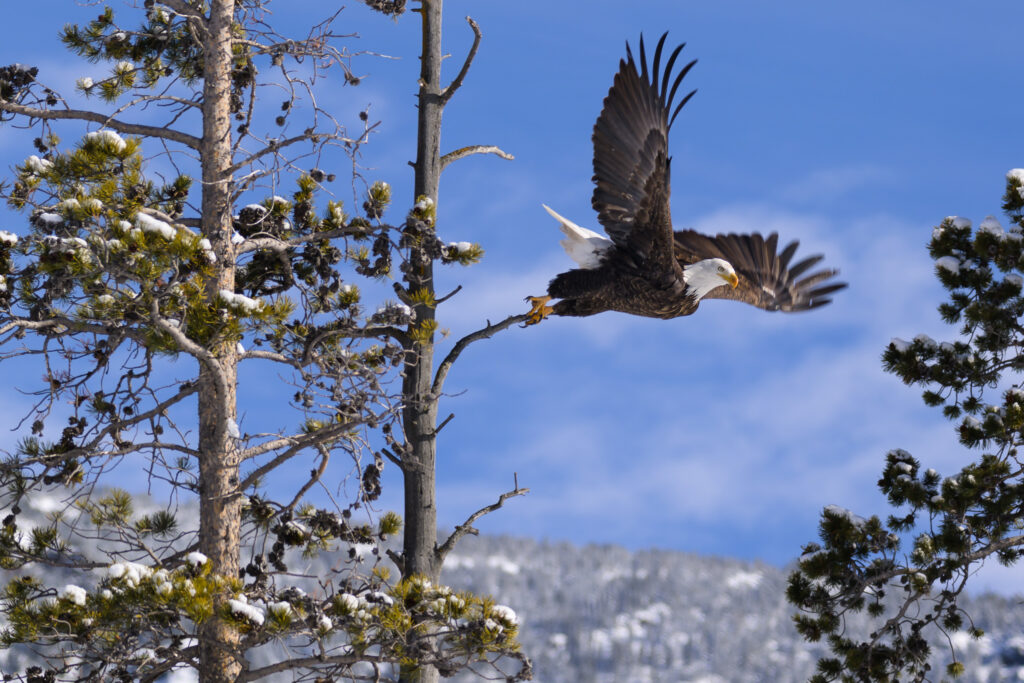
Also, the larger the animal in your frame, the faster the shutter speed must be to freeze its motion. In other words, use faster shutter speeds when using long zoom lenses or when you are very close to the animal.
Stationary or sedentary animals
Animals are often stationary, like a resting lion, gorilla, or pronghorn. There is slight or no motion in a scene like this, and a shutter speed of 1/100–1/400 second will produce sharp images. Even though the animal may be motionless, at these shutter speeds, pay attention to foliage moving due to wind. If plants are swaying in the wind, use a shutter speed of at least 1/250–1/320 second to maintain sharpness.

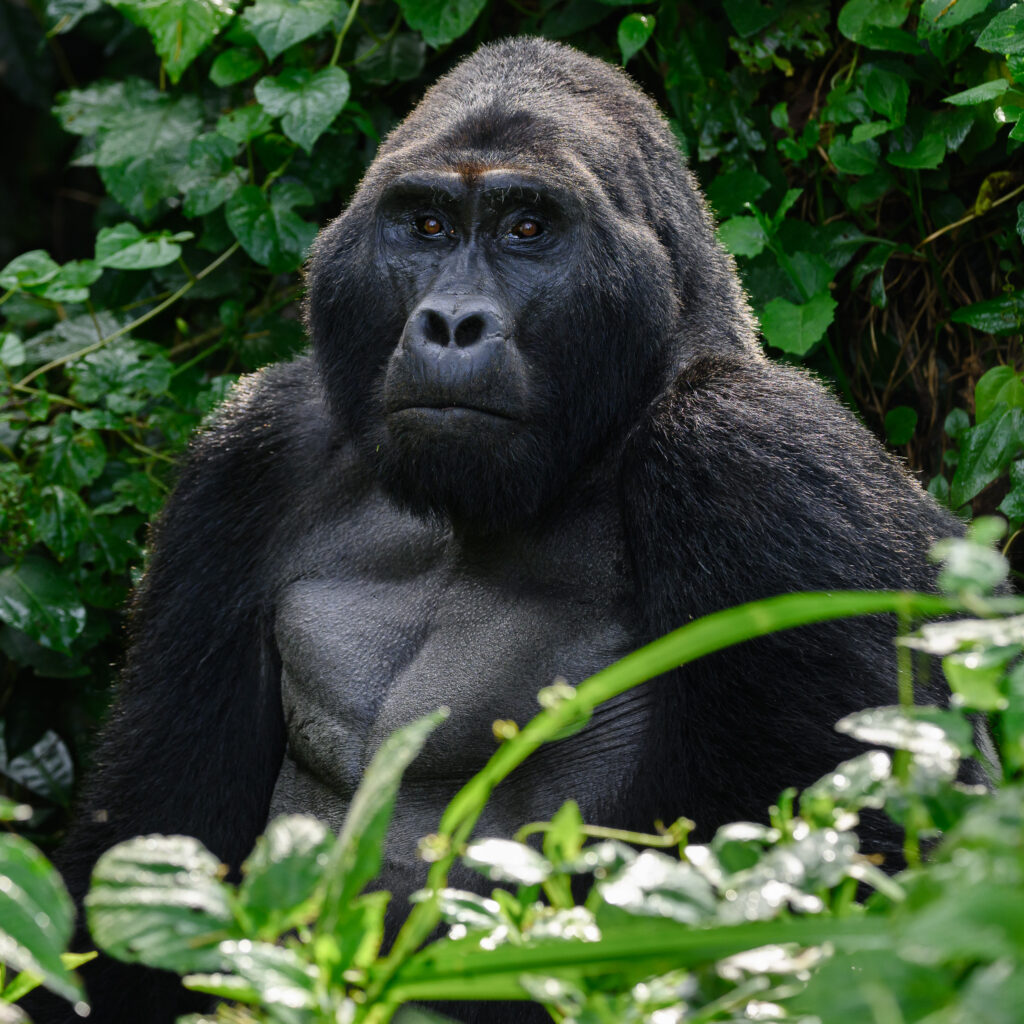
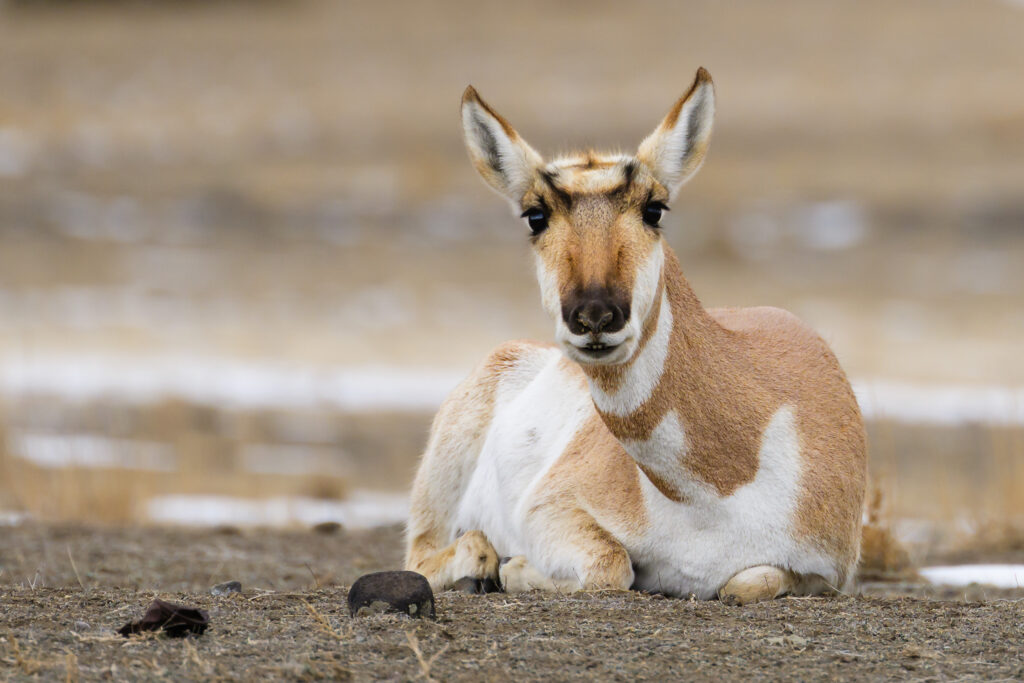
Walking animals/slower motion
Many animal movements are slow, like penguins walking on a beach, bison walking in the snow, or bears walking along a river. A shutter speed of 1/500–1/1000 second will produce sharp images for this type of motion.
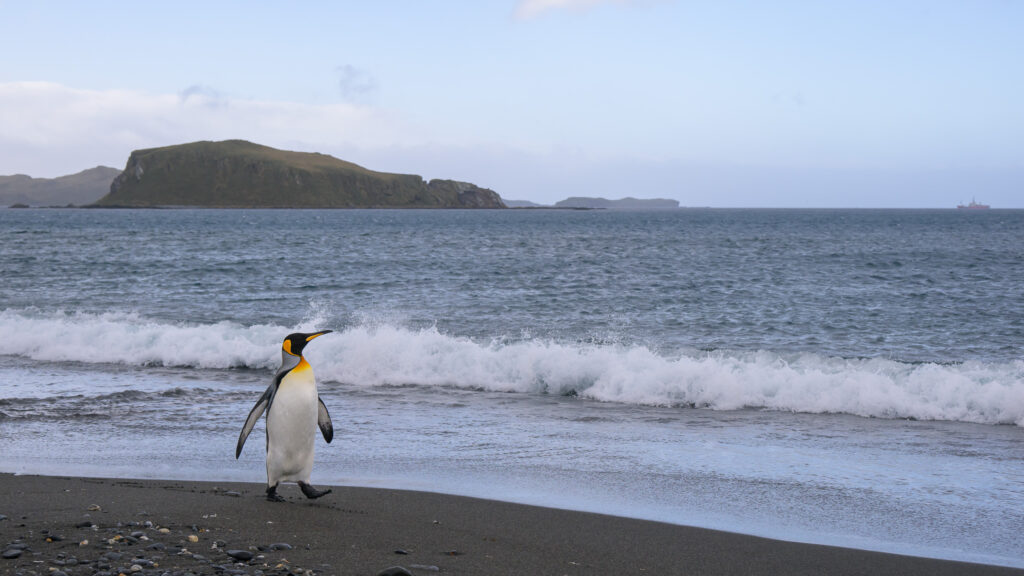


Running, hunting, or fighting animals
Some of the most exciting wildlife photographs involve running, hunting, or fighting, like horses running through water, bison chasing each other, bears fishing, or monkeys wrestling. The motion in these scenes is faster, and a shutter speed of 1/1000–1/2000 second is needed to produce sharp photos.

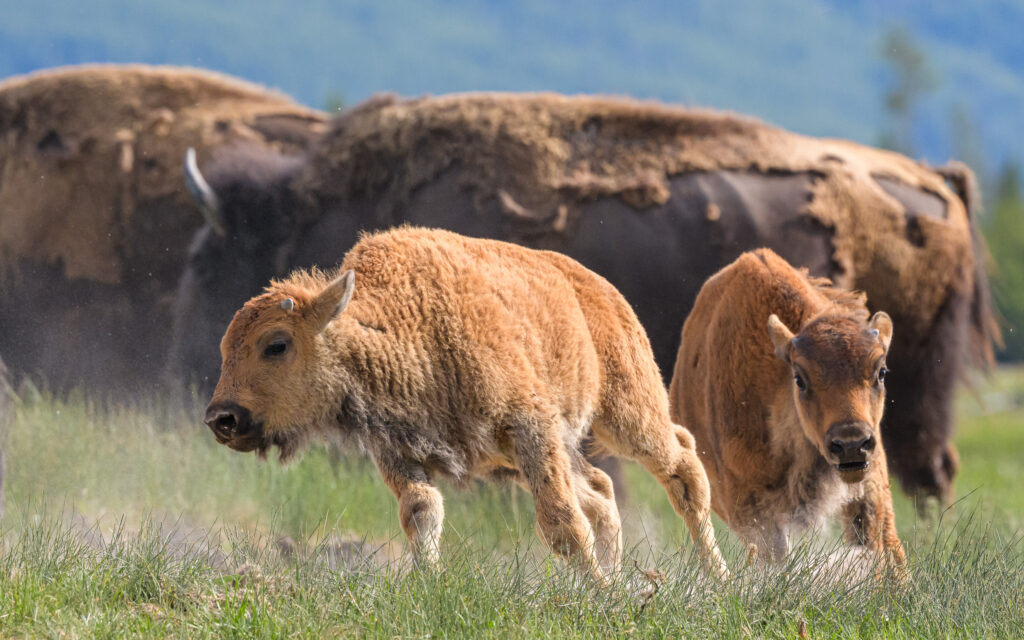
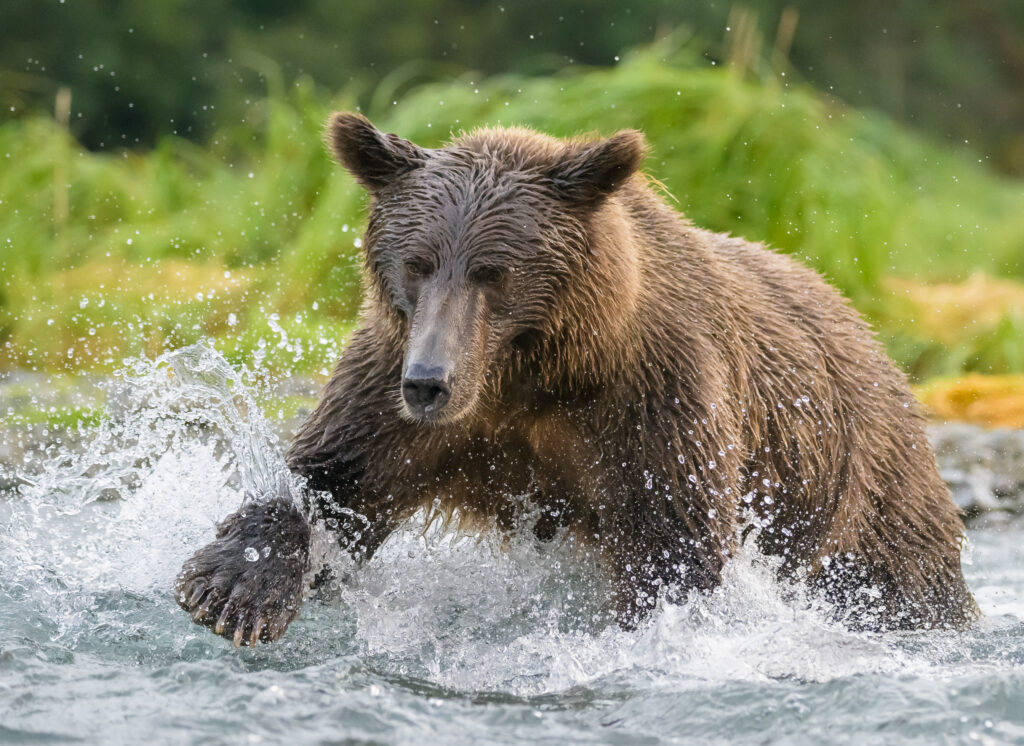
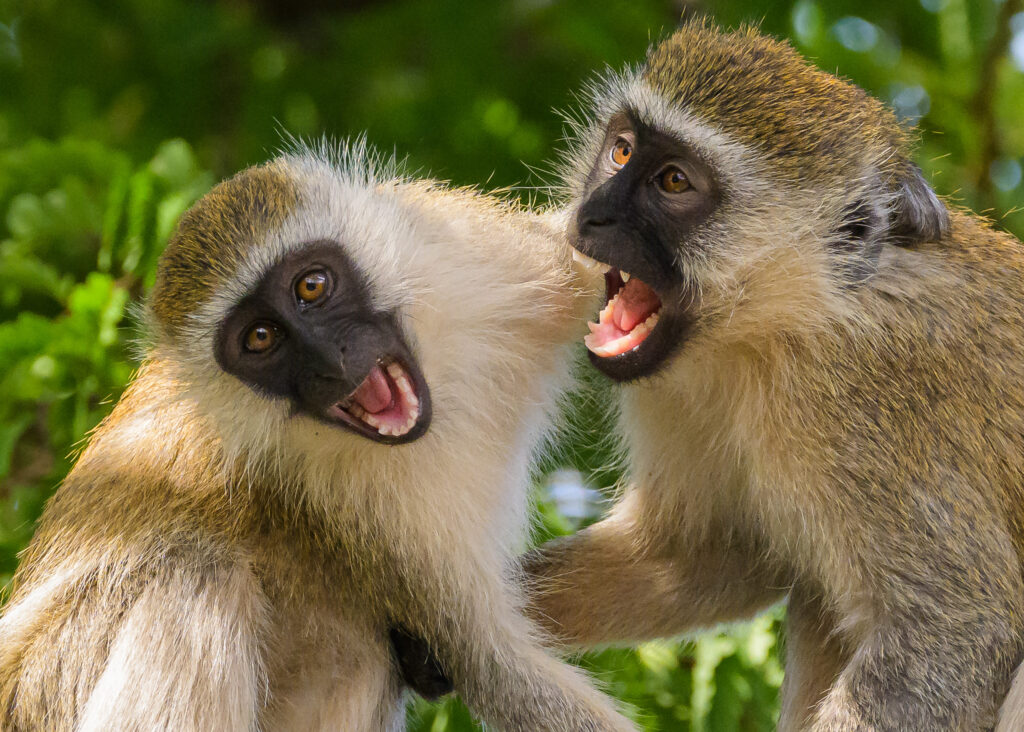
Large flying birds
Large birds fly in a smooth, gliding motion, with slower beats of their long wings, like a gliding eagle or an egret landing in a marsh. A shutter speed of 1/1600–1/2500 second will result in sharp photos. You’ll find that the wing tips move more quickly than the bird’s body, especially at takeoff, so you may need a faster shutter speed to freeze the motion of their primary feathers. However, you can also leave a slight blur in their wing tips as a creative effect that implies motion.
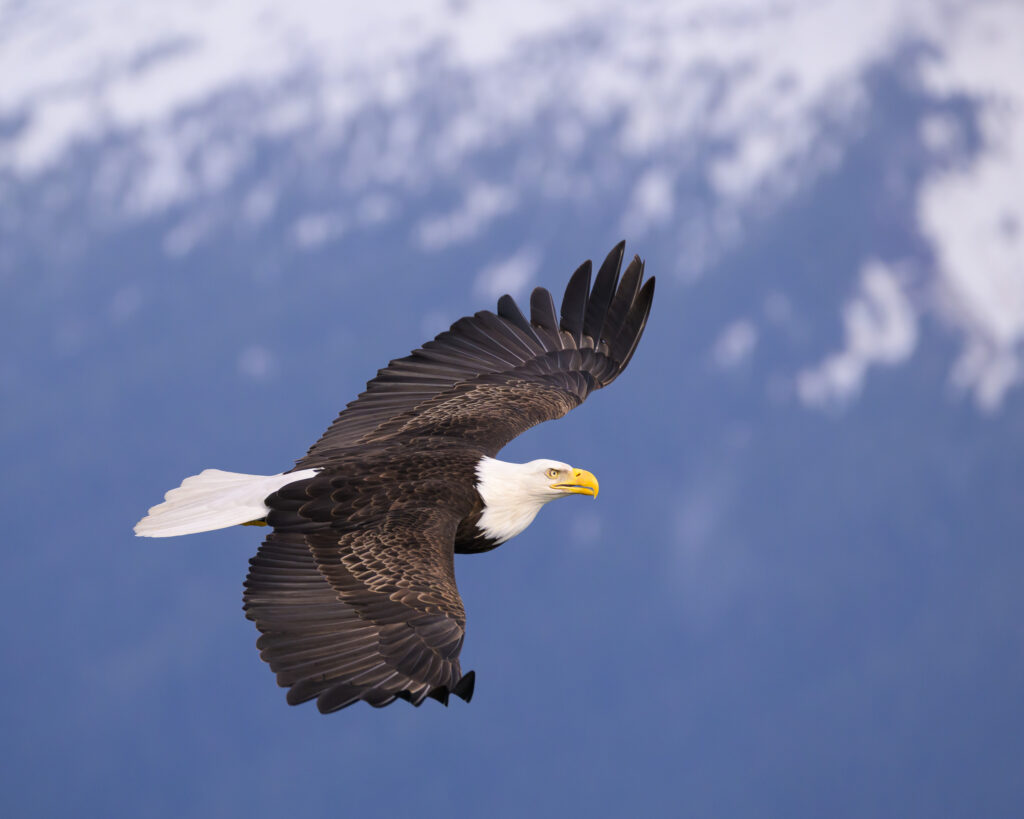
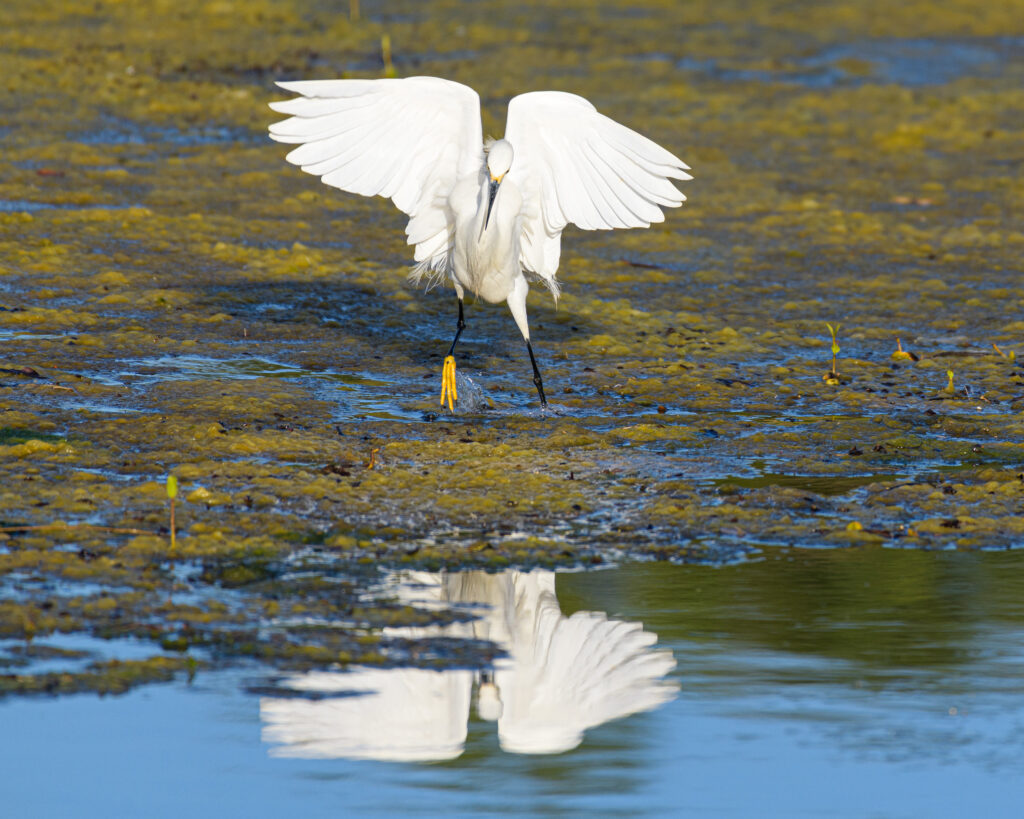
Small, fast birds
Small birds, like songbirds, puffins, and hummingbirds, fly extremely fast, beating their wings quickly and sometimes moving erratically. To freeze their motion, use a shutter speed of 1/2500–1/4000 second. The wing speed of hummingbirds is particularly fast, and they require a very fast shutter speed to freeze their motion.

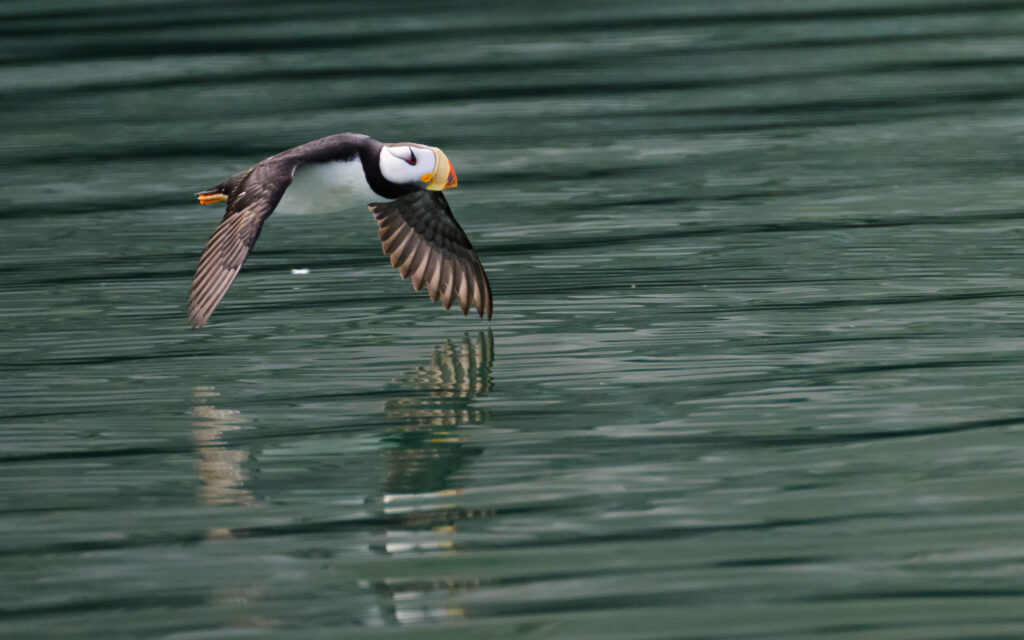


Don’t use faster shutter speed than you need
When starting in wildlife photography, the most frequent beginner mistake is using a shutter speed that is too slow to freeze the motion in the scene. As wildlife photographers learn to use faster shutter speeds, they often begin making the opposite mistake, using very fast shutter speeds for scenes that don’t need them. These high shutter speeds mean higher ISO and more digital noise. For example, don’t photograph a scene at 1/8000 second if it only requires 1/1000 second.
Low light
Your camera has plenty of light in bright daylight, and you can often photograph at fast shutter speeds, like 1/1000–1/2000 second, while maintaining reasonable ISO settings and low digital noise regardless of the motion. However, animals are frequently most active at the beginning or end of the day, and the most compelling photographs often happen in low-light situations that are challenging for wildlife photographers.
The ISO setting for proper exposure climbs rapidly as the sun goes down, resulting in noisier photos. Higher ISO settings are also needed to photograph action on dark, overcast days. When the light is low, find the slowest shutter speed that freezes the motion in the scene, but no faster. Use your camera’s high ISO capabilities, knowing that you will use noise reduction in post-processing.
Once you have reached the upper limits of your ISO settings, you must make other compromises. Use a wider aperture, knowing that some areas of the photo will not remain in focus, or use slower shutter speeds, hoping you are still fast enough to freeze the action.
In the following photo, the five bears are moving through the field as the sun is setting behind the mountains, and they are in shadow. Because of their staggered depth, an aperture of f/13 was required. The ISO climbed to 12,800, and the shutter speed was the only setting to change. Luckily, they were moving slowly enough that 1/400 second was sufficient for a sharp image.

For beginners
As a wildlife photography beginner, you may find that making shutter speed changes while tracking an animal’s action is initially overwhelming. As a simple recommendation, set your shutter speed to 1/1000 second for most animals, 1/2000 second for large birds, or 1/3200 for small, fast birds. These settings aren’t always perfect but usually result in sharp photos.
Experienced wildlife photographers will constantly change their shutter speed as each situation requires. This skill takes practice and repetition. Even professional wildlife photographers make shutter speed mistakes because wildlife action can be quick and unexpected.
Wildlife shutter speed cheat sheet
| Type of action | Shutter speed |
| Stationary/sedentary animals | 1/60–1/400 second |
| Walking animals/slower motion | 1/500–1/1000 second |
| Running, hunting, or fighting animals | 1/1000–1/2000 second |
| Large flying birds | 1/1600–1/2500 second |
| Small, fast birds | 1/2500–1/4000 second |